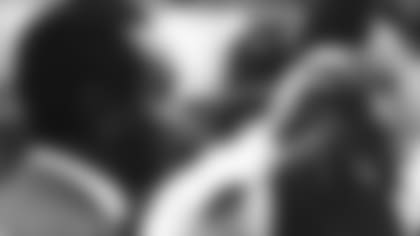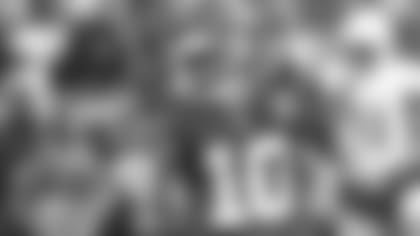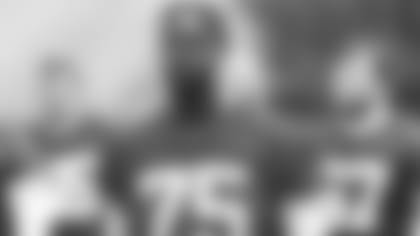*This is another in a season-long series on the Kansas City Chiefs search for a franchise quarterback. It appears weekly on Thursdays throughout the 2015 season.
*
While John Elway, Dan Marino and the others from a draft class of six quarterbacks taken in 1983's first round had achieved various levels of success by 1985, Blackledge remained on the sidelines behind Bill Kenney.
He had been the seventh player taken overall but only one of the six first-round quarterbacks who did not begin the 1985 season as a starter. By that time Elway had the Broncos in first place. Jim Kelley, chosen 14th by Buffalo, had signed with the Houston Gamblers of the USFL and was one of the best quarterbacks in that league. Tony Eason, taken 15th by New England, had played superbly by 1984, finishing as the NFL's third-ranked passer behind Dan Marino and Joe Montana.
Then there was Ken O'Brien, taken 24th from Cal-Davis by the Jets, and Marino, 27th by Miami. O'Brien had the Jets in first place in 1985 and was a top-five passer in the league. But Marino stands out as the most obvious can't-miss by Chiefs followers.
Blackledge's real misfortune was to arrive in Kansas City just as Kenney was becoming something of a phenom throwing the football after a most undistinguished career. It wasn't as if he was beloved to the extent any of the rookie quarterbacks around the league were, at least not to Chiefs fans, but by his head coach's standards and the front office, too, he could not be easily replaced.
To the fans, he was no equal of Len Dawson, who they held in the highest regard, even after Kenney's 1983 banner year.

Despite his stats, Kenney found little fan support
"Kenney couldn't be further from a complete quarterback," vexed one fan in a letter to the Kansas City Times. "All records Kenney has broken should be followed by an asterisk."
But a teammate who had played with Livingston, Kenney, Fuller, and Blackledge believed Kenney was "the best one of the bunch, I mean he had the best command of a passing offense. Todd didn't run that kind of offense in college and neither did Fuller."
As a rookie Mackovic had been adamant that Blackledge would not start, and he got into only four games as Kenney went on to become an alternate in the Pro Bowl after passing for 4,348 yards, the fourth best total in NFL history at that time.
It wasn't as if Blackledge was ready for the pros after having played in Joe Paterno's offense at Penn State, but it would profit him to have started sooner.
In 1984, Blackledge only started because Kenney was on injured reserve. He helped lead the team to two wins on the road, scoring 64 points, although eventually Kenney reclaimed the job. In his stretch as the temporary starter — a role he would fulfill through the majority of his career in Kansas City — the team went 4-3, although Kenney returned and contributed in the club's win over San Diego and the Chiefs clinging to a 10-6 lead.
Blackledge's next two starts were one-and-done's, the first a pretty poor performance against the winless Houston Oilers, but who beat the Chiefs 17-16, the second a 16-0 loss to the LA Rams in the seventh game of the 1985 season when he threw six interceptions.
In his last five starts of 1985 the Chiefs won three although, once again, Kenney came in to play a key role in a 38-35 win over the Chargers. Still, Blackledge was given the starter's position and played the lead role.
If there was any time he played with a sense of comfort and control, it was the five he started in 1985 because he knew it was his job and he need not look over his shoulder. The only time he had been able to say that had been in 1984 when he started those first two games. He was eventually replaced by Kenney in the seventh game and it was back to the bench.
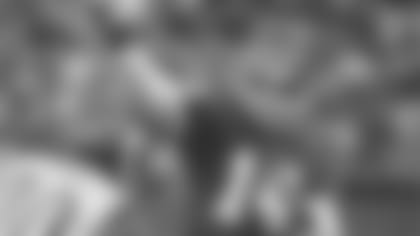
Blackledge was never able to recapture his 1984 career start
By the conclusion of 1986 it was clear that Blackledge was largely ineffectual when he started and that Kenney was susceptible to injury.
Going into his fourth season, Blackledge had 14 starts for Kenney in his first three years and the Chiefs had won half of them. He had completed 51% of his passes with 25 interceptions and only 15 touchdown passes.
But it had never been Blackledge's offense. It had been Kenney's and in his fourth season Mackovic had been forced to re-design his offense to Blackledge's talents which had to do with his mobility with more bootlegs and rollouts. Then, when Kenney returned, the offense had to be re-tooled again, to fit his skills. One of the quarterbacks was mobile (Blackledge), one was not (Kenney).
So much of this indecision at quarterback had been because of Kenney and his inability to stay healthy. "He wasn't very mobile," one player recalled, "and pressure got to him easier than Fuller and Blackledge. He seemed to always be hurt."
In 1984, Kenney missed the first six games of the season because of a broken thumb, but then entered the seventh midway through the third and shredded the Chargers defense for 238 yards and the Chiefs won.

Kenney suffered nurmerous injuries
But three weeks later against Seattle, trying to play despite shoulder and elbow injuries, he was intercepted before leaving the game with a knee injury.
In 1985, he opened the season with a 397-yard, three touchdown day against New Orleans. He was injured the next week against the Raiders, suffering a bruised sternum. In the third game of the season at Miami he had two interceptions and completed just 19 of 38 passes for 205 yards.
As 1987 wound down, Kenney had missed 16 regular season games because of injuries since his break-out year of 1983. While he had some impressive statistics, the teams he led were 32-36 in his starts.
Blackledge, meantime, had started only 22 games in four seasons. By 1987 his four-year contract was up and the end came with gravitational certainty, his career in Kansas City was over, leaving the franchise in much the same place it had been when the two quarterbacks took center stage in 1983.
Certainly, one factor missing in all the exasperation shown by the ticket-buying public was what the quarterbacks had to work with on the field. No one could argue that they were surrounded with great players only needing the right man to pull the trigger.

In the end, Blackledge asked for a trade
There were some draft picks that didn't fit the offense that Mackovic was running, for example, Willie Scott, and that puzzled some veteran players. "You had to wonder sometimes what they were thinking," one explained looking back over the years of Chiefs drafts in the 1980s when he played on the team.
The offensive lines were often porous — Kenney's many injuries due to that factor — the running attack missing, and the offensive approach unfulfilling — the fault of coaching as much as the players.
Blackledge took the majority of the criticism for the failure once again, more than Kenney, although he remained unloved, too. In so many ways, the situation approximated what the public had witnessed with Fuller. But Fuller had never been given the opportunities to show what he could do as Blackledge had. It was another disappointment and the first person to pay was Les Miller, the director of personnel and the man handling the draft, who was replaced even though he was rumored to have been in the Marino camp at the time the pick was to be made.
But what lingers today is what happened in the other cities with the other quarterbacks from the draft class of 1983. For close followers, it still aggravates them that the Chiefs passed on Marino. In truth, he had been the choice of a number of front office staff, but Mackovic wanted Blackledge all the way. The coach had visited with Marino, too, but he clearly knew Blackledge better and it was his new offense that had excited ownership most of all.
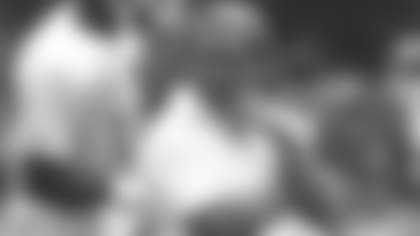
Personnel director Les Miller was eventually replaced
So, as it was when the front office bowed to Levy's wants in the first round, the decision again went the head coach's way and on Mackovic's shoulders it should fall. In the end, it might have been one of the factors that contributed to the loss of his job when he was dismissed after the 1986 season, even following the team's trip to its first playoff in15 years.
Much as he said about the failure of Fuller to make a difference, Lamar Hunt, usually measured in his public comments but clearly frustrated now, said the real setback to the team had been Blackledge's lack of development.
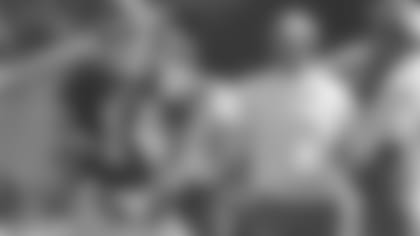
Blackledge had been the head coach's preference
"If we had drafted [Dan] Marino," he said, "then we'd be in pretty good shape. Only Miami can make that statement. We got the only one who is not good at this point. Until your quarterback situation is resolved, it is always a concern."
And it remained unresolved. Kenney was now 33 years old, injured, and his offensive output a long way from the 1983 record setting season. For the Chiefs it was back to the future once again.
Next time: Chapter 12: Change we can believe in



